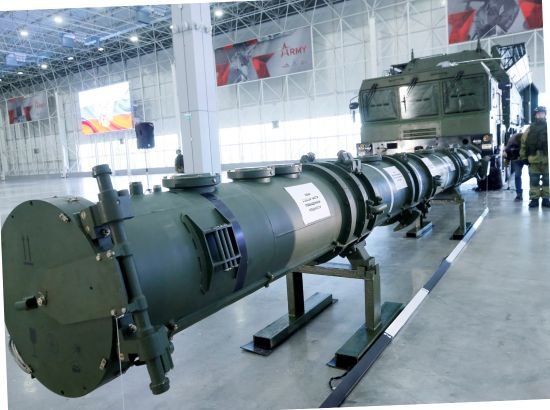
Moscow / Kyiv:
The Russian 9M729 cruise missile, also known by NATO as SSC-8 “Screwdriver”, has once again become the center of global concern. Accused of violating nuclear treaties and used in the Ukraine war, this missile is considered one of Russia’s most controversial and dangerous weapons — capable of threatening not just Ukraine but the entire European continent.
Ukraine’s Foreign Minister Andriy Sybiha claimed that since August 2025, Russia has launched over 23 9M729 missiles in combat operations. The latest attack on October 5, 2025, targeted Lapiivka village, nearly 600 km from the launch site, killing four civilians. Debris recovered from the site reportedly bore 9M729 serial markings, confirming its use.
The 9M729 missile is a ground-launched cruise missile (GLCM) designed by Russia’s NPO Novator in Yekaterinburg. It became the center of a global dispute after the United States accused Moscow of violating the Intermediate-Range Nuclear Forces (INF) Treaty, signed in 1987 to eliminate land-based missiles with ranges between 500 km and 5,500 km.
According to US intelligence, the 9M729 can reach 2,500 km, far exceeding the INF limit. This prompted Washington to withdraw from the INF Treaty in 2019, citing clear evidence of Russian non-compliance.
Russia, however, insists the missile’s range is only 480 km and accuses the US of “politicizing” the issue to justify its own weapons programs.
Length: 6–8 meters
Diameter: 0.514 meters
Engine: TRDD P-95-300 / RDK-300 turbofan engine
Launch platform: 9K720 Iskander TEL (Transporter Erector Launcher)
Payload: 500 kg — capable of carrying conventional or nuclear warheads
Guidance systems: INS (Inertial Navigation System), GPS/GLONASS, and Digital Scene Matching (DSMAC)
Flight altitude: As low as 50 meters (terrain-hugging flight path for radar evasion)
Range: 500–2,500 km (depending on configuration)
Type: Subsonic cruise missile (not supersonic)
Each Iskander launcher can fire four 9M729 missiles, offering Russia a flexible and highly mobile strike capability.
Military analysts believe this system gives Moscow a strategic nuclear advantage, especially against NATO installations in Europe.
Ukraine alleges that Moscow’s use of the 9M729 is part of a deliberate psychological strategy to intimidate NATO and the EU, showing that Russia could strike Sweden, Finland, or even the UK from within its borders.
The missile’s recent 600 km strike range contradicts Russia’s previous claim of a 480 km limit, reinforcing US accusations of treaty violation.
Experts say Russia’s deployment of 9M729 missiles signals its intent to prolong the Ukraine war and deter Western involvement. In response, US President Donald Trump has reportedly ordered nuclear test preparations — a move viewed as both a warning and a show of strength.
2008–2014: Development and testing phase of the 9M729
2016: Full-scale production begins in Russia
2017: US accuses Moscow of illegal deployment
2019: US formally withdraws from the INF Treaty
2025: Reports emerge of 9M729 use in Ukraine for the first time
By 2017, Russia had already deployed two battalions — roughly 64 missiles — across Western Russia. Though its operational use ceased after the treaty fallout, the missile’s reappearance in the Ukraine conflict has reignited global fears of a new arms race.
Defense experts warn that the 9M729’s flexibility — to carry either conventional or nuclear payloads — makes it a “gray-zone weapon”, blurring the line between tactical and strategic warfare.
Its stealthy trajectory, low radar profile, and rapid deployability make it extremely hard to intercept, giving Russia an upper hand in deterrence scenarios.